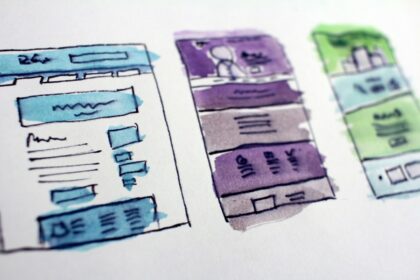
“So How Much Does a Website Cost?”
I spent a lot of time answering this question. My answer is always the same:
It depends.
Think of building your website as if you were building a house. If you’re OK with living in any old shack down by the river, you’ve got a lot of options. But let’s say you want a Victorian with a wrap-around porch, white trim, a garden, and a giant yard for your 2.5 kids and golden retriever. Now, you’re talking about an entirely different process.
How many bedrooms are there? What school district is it in? Will there be room for my massive Green Bay Packers collection?
You wouldn’t just wake up one morning and buy a house willy-nilly. You would take time to set your budget, go to open houses, and argue with your loved ones about which option is best. Websites work the same way. Many opportunities will work if you want to let the world know you exist. When asked how much a website costs, my answer centers around what you want and need it to do for your business.
After more than ten years of working in the web and marketing space, I’ve noticed that what used to be the main price driver in the digital area has started to change. Historically, a website’s big cost driver was its complexity level. Sites can still get very complex, but the landscape is experiencing a shift.
I now assess how many pages your site needs, how many words you’re starting with versus how many need to be written, how good your crucial messaging and stories are, etc.
Content is the new digital price driver, and that shift appears to be here to stay.
Here are four main cost drivers I most often see in web development:
- Functionality and Brand Attraction
- Cost of Content (not the number of pages, but the messaging on those pages)
- Custom vs. Template
- Dynamic Functionality
As a Marketing consultant, It can be frustrating when prospects ask for websites without any context of what they’re being asked to achieve. Between a wide range of business objectives and shifting cost drivers, I will attempt to lay out a few level-setting expectations when developing a new website.
To begin, check out this post I wrote about developing marketing budgets. Long story short, I usually recommend spending about 5% to 10% of annual revenue on marketing—which could include a website.
A strong website foundation will be a great foundation (not the entire house) to build your content strategy. You’ve got some data-driven approach and planning, custom branding and critical messaging help, and SEO optimization for a handful of keywords… But remember, this will give you a strong nucleus that you can (and should) start adding to every month based on your growth and business objectives.
To prevent your website from being a shack made of twigs down by the river, I’ll set up some bumpers to guide you toward the right solution for your business:
ENTRY LEVEL: $2,500 – $5,000
Work with a freelance web developer with a templated approach.
SMALL BUSINESS: $5,000 – $20,000
Work with a small webshop using a template base with some custom design.
SMALL/MID SIZE BUSINESS: $20,000 – $50,000
Work with an agency or firm for custom planning, design, and development.
ENTERPRISE: $50,000+
Work with an agency to develop custom plan with dynamic functionality.
Always remember to pursue the solution that best fits your business objectives. If you’re looking for an agency, I would encourage you to find one that can support your brand for a long time. You will be best served by working with a partner who is invested in helping you leverage your digital investment.

